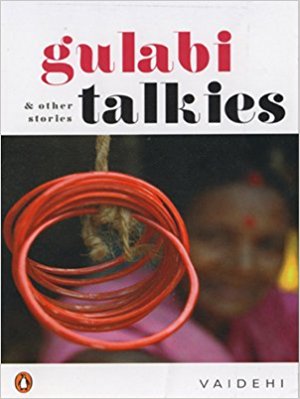The speaker of the above lines in the last story of this selection is someone who was forced by circumstances to murder her mother to rescue her from further indignities. It is a secret that she has to keep from both the home and the world so as to live out her life. But speak she must at least to another woman. Like the secrets of love she can share only with another woman in the traditions of love poetry. It is this dimension of women’s speech and life that gets foregrounded in Vaidehi’as short fiction. It is something men cannot guess or have the courage to acknowledge. The fact that it is not easy even for women to face the truth about themselves is also recognized in her stories. The woman who has the nerve to see and tell the truth about herself often becomes a disturbing mirror of another who prefers to shy away from it, a recurrent narrative strategy in her writings. This complex treatment of women’s hidden worlds is what makes Vaidehi a very important writer in Kannada. Against the background of Kannada fictional world that for the most part depicts the stereotyped clash between the country and the city, like Poorna Chandra Tejaswi, Vaidehi locates the events of her stories in a small town, which becomes the playground of clash of forces of tradition and those of change.
Unlike in Tejaswi, her emphasis is more on the slow but sure changes taking place in the hearts of women in a changing milieu. This is what makes her story ‘Gulabi Talkies’ similar to but also different from Tejaswi’s ‘Abachoorina Postapheessu.’
Another feature of her writings is her avoidance of modernistic formalism as well as of facile naivety of pulp fiction. Her fiction is neither ‘writerly’ nor ‘readerly,’ but engaging and, at the same time reader-friendly. It spices the standard literary Kannada with just the right quantity of Kundapur Brahmin Kannada. Unlike some fictional experiments in Kannada, her style does not resort to overdose of incomprehensible regional dialect. Put together, her stories lay bare the shifting soulscape of women. They weave an unusual but familiar tapestry of a variety of voices, scenes, situations and characters, mostly, but not always women. By orchestrating a whole range of tones, comical, serious, flippant, clinical and compassionate, Vaidehi explores her world with a Chekhov-like finesse. The twenty gripping stories included in the present book bear testimony to her remarkable skill as a fiction writer. Her protagonists, Lilibai, Abha, Akku, Bachchamma, Vanimai and several others enact a rite of passage from their old self to the new, each in her own way. This is how they break out of the prisons of the past. One of the translators, Tejaswini Niranjana, bemoans the paucity of critical material on an important writer like Vaidehi. But is it also not the case with several other equally important writers in Kannada? A remarkable work of fiction, Chakori, by the well-known writer Chandrashekhar Kambar went completely unnoticed by Kannada criticism as the work challenged the accepted modes of fiction writing. In this situation of critical apathy to innovative works, Vaidehi is fortunate in having attained a certain degree of visibility better than several of her peers. The present volume is a great step forward in making her works better known to non-Kannada readership.
Some of the essential features of Vaidehi’s work are not easy to capture in English translation. The Kundapura Brahmin idiom that informs her language has no equivalents in English. If her rooted kind of fictional narrative is translated into English English, it would lose its authentic regional flavour. A delicate balance between the source and target text is needed. If affective, not formal, equivalence is the mark of a translation that works, the translators of the present volume have done a wonderful job as is exemplified in the following passages:
If I had sent her with her father then, I would have had no difficulty in life. But I was worried that his new wife may be a wicked woman, like Tataki or Lankini…. A mother’s heart is softer than a lotus stem! If your sapling withers, can you allow the bud of the sapling to wither away, too? In making that tiny infant to grow up to this size, Pathammatte’s back got completely bent… (p. 151) But if her mother knew that Sugandhi thought about someone casting himself on her like a tiger, tying her up so she couldn’t move… (p. 113) ‘Son,’ she said, ‘if my husband can’t see to filling his children’s stomachs, what can I do but work elsewhere? I can’t let everyone’s belly dry up’ (p. 54)
In spite of different stories being translated by different translators, they are held together by strategies of translation worked out in togetherness. In effect, we have in this volume a good model of mediating between Indian languages and English in a creative way.
The result is that we have a volume of stories not only well-written, but also well-translated. It is no doubt a valuable addition to the list of books of translation from contemporary Indian fiction. The author, translators and publishers deserve the compliments of all lovers of living Indian literatures. But, dear publishers, could you not have improved upon the drab calendar art look of the cover page?
H.S. Shiva Prakash, a Kannda poet, playwright, translator and critic, former editor of Indian Literature, is now Professor, School of Arts and Aesthetics, Jawaharlal Nehru University, New Delhi.

